Saving Energy Using the Modified Heuristic Algorithm for Energy Saving (MHAES) in Software-Defined Networks
Abstract
:1. Introduction
2. Software Defined Networks
3. Energy Saving Solutions in SDN Networks
3.1. Compression TCAM Solution
3.2. End Host-Aware Solution
3.3. Traffic-Aware Solution
3.4. Rule Placement Solution
4. Energy-Aware Approach—Modified Heuristic Algorithm for Energy Saving (MHAES)
4.1. Mathematical Model for Traffic-Aware Solutions
4.2. Mathematical Model for Rule Placement Solutions
4.3. Mathematical Model and Algorithm of MHAES
| Algorithm 1 The modified heuristic algorithm |
| FOR EACH CuRe IN R DO IF CuRe is first request THEN CuPa = Shortest_Path(CuRe) CPo = Power_Value(CuPa, CuRe) Update(CuPa, ASW, SSW, AL, CA, F) ELSE P = All_Available_Paths(CuRe) SP = [] FOR EACH CuPa IN P DO IF Available_Capacity(CuPa)>TCA THEN CPo = Power_Value(CuPa, CuRe) SP ← CuPa, CPo END IF END FOR OP = Minimum_Power_Path(SP) Update(OP, ASW, SSW, AL, CA, F) END IF END FOR |
| Algorithm 2 Function Power_Value |
| Power_Value(path, CuRe) FOR all CL IN path DO Active_Links_Update(CL, CuRe) Basic_Flow_Update(CuRe) IF origin(CL) or destination(CL) not in ASW THEN IF count(ASW)>TASW THEN RETURN infinite END IF Active_Switches_update(ASW, SSW) END IF power=Calculate_Power(CL, CuRe) END FOR RETURN power |
5. Simulation and Results
6. Conclusions
Author Contributions
Funding
Data Availability Statement
Conflicts of Interest
References
- Farhady, H.; Lee, H.; Nakao, A. Software-defined networking: A survey. Comput. Netw. 2015, 81, 79–95. [Google Scholar] [CrossRef]
- Mendiola, A.; Astorga, J.; Jacob, E.; Higuero, M. A survey on the contributions of software-defined networking to traffic engineering. IEEE Commun. Surv. Tutor. 2016, 19, 918–953. [Google Scholar] [CrossRef]
- Kannan, K.; Banerjee, S. Compact TCAM: Flow Entry Compaction in TCAM for Power Aware SDN. In Distributed Computing and Networking; Springer: Berlin/Heidelberg, Germany, 2013; pp. 439–444. [Google Scholar] [CrossRef]
- Shirayanagi, H.; Yamada, H.; Kono, K. Honeyguide: A VM migration-aware network topology for saving energy consumption in data center networks. In Proceedings of the 2012 IEEE Symposium on Computers and Communications (ISCC), Cappadocia, Turkey, 1–4 July 2012; pp. 000460–000467. [Google Scholar] [CrossRef]
- Bera, S.; Misra, S.; Saha, N. Traffic-Aware Dynamic Controller Assignment in SDN. IEEE Trans. Commun. 2020, 68, 4375–4382. [Google Scholar] [CrossRef]
- Wang, L.; Li, Q.; Sinnott, R.; Jiang, Y.; Wu, J. An intelligent rule management scheme for Software Defined Networking. Comput. Netw. 2018, 144, 77–88. [Google Scholar] [CrossRef]
- Applegate, D.L.; Calinescu, G.; Johnson, D.S.; Karloff, H. Cornpressing rectilinear pictures and rnini rnizing access control lists. In ACM-SIAM Syrnposiurn on Discrete Algorithrns (SODA); ResearchGate: New Orleans, LA, USA, 2007; pp. 1066–1075. Available online: https://www.researchgate.net/publication/313406230_Compressing_rectilinear_pictures_and_minimizing_access_control_lists (accessed on 22 January 2023).
- Meiners, C.R.; Liu, A.X.; Torng, E. TCAM Razor: A Systematic Approach Towards Minimizing Packet Classifiers in TCAMs. In Proceedings of the 2007 IEEE International Conference on Network Protocols, Beijing, China, 16–19 October 2007; pp. 266–275. [Google Scholar] [CrossRef]
- Bolla, R.; Bruschi, R.; Davoli, F.; Di Gregorio, L.; Donadio, P.; Fialho, L.; Collier, M.; Lombardo, A.; Recupero, D.R.; Szemethy, T. The Green Abstraction Layer: A Standard Power-Management Interface for Next-Generation Network Devices. IEEE Internet Comput. 2013, 17, 82–86. [Google Scholar] [CrossRef]
- Li, D.; Shang, Y.; Chen, C. Software defined green data center network with exclusive routing. In Proceedings of the IEEE INFOCOM 2014—IEEE Conference on Computer Communications, Toronto, ON, Canada, 27 April–2 May 2014; pp. 1743–1751. [Google Scholar] [CrossRef]
- Markiewicz, A.; Tran, P.N.; Timm-Giel, A. Energy consumption optimization for software defined networks considering dynamic traffic. In Proceedings of the 2014 IEEE 3rd International Conference on Cloud Networking (CloudNet), Luxembourg, 8–10 October 2014; pp. 155–160. [Google Scholar] [CrossRef]
- Tuysuz, M.F.; Ankarali, Z.K.; Gözüpek, D. A survey on energy efficiency in software defined networks. Comput. Netw. 2017, 113, 188–204. [Google Scholar] [CrossRef]
- Giroire, F.; Moulierac, J.; Phan, T.K. Optimizing rule placement in software-defined networks for energy-aware routing. In Proceedings of the2014 IEEE Global Communications Conference, Austin, TX, USA, 8–12 December 2014; pp. 2523–2529. [Google Scholar] [CrossRef]
- Mogul, J.C.; Tourrilhes, J.; Yalagandula, P.; Sharma, P.; Curtis, A.R.; Banerjee, S. DevoFlow: Cost-effective flow management for high performance enterprise networks. In Proceedings of the 9th ACM SIGCOMM Workshop on Hot Topics in Networks, Monterey, CA, USA, 20–21 October 2010; pp. 1–6. [Google Scholar] [CrossRef]
- Singh, S.; Jha, R.K. A Survey on Software Defined Networking: Architecture for Next Generation Network. J. Netw. Syst. Manag. 2017, 25, 321–374. [Google Scholar] [CrossRef]
- Xia, W.; Wen, Y.; Foh, C.H.; Niyato, D.; Xie, H. A Survey on Software-Defined Networking. IEEE Commun. Surv. Tutor. 2015, 17, 27–51. [Google Scholar] [CrossRef]
- Kreutz, D.; Ramos, F.M.V.; Esteves Verissimo, P.; Rothenberg, C.E.; Azodolmolky, S.; Uhlig, S. Software-Defined Networking: A Comprehensive Survey. Proc. IEEE 2015, 103, 14–76. [Google Scholar] [CrossRef]
- Abdelaziz, A.; Fong, A.T.; Gani, A.; Garba, U.; Khan, S.; Akhunzada, A.; Talebian, H.; Choo, K.-K.R. Distributed controller clustering in software defined networks. PLoS ONE 2017, 12, e0174715. [Google Scholar] [CrossRef] [PubMed]
- Chien, W.-C.; Lai, C.-F.; Cho, H.-H.; Chao, H.-C. A SDN-SFC-based service-oriented load balancing for the IoT applications. J. Netw. Comput. Appl. 2018, 114, 88–97. [Google Scholar] [CrossRef]
- Lara, A.; Kolasani, A.; Ramamurthy, B. Network Innovation using OpenFlow: A Survey. IEEE Commun. Surv. Tutor. 2014, 16, 493–512. [Google Scholar] [CrossRef]
- Li, W.; Meng, W.; Kwok, L.F. A survey on OpenFlow-based Software Defined Networks: Security challenges and countermeasures. J. Netw. Comput. Appl. 2016, 68, 126–139. [Google Scholar] [CrossRef]
- Kovács, M.; Agg, P.A.; Johanyák, Z.C. SDMN Architecture in 5G. Műszaki Tudományos Közlemények 2020, 13, 101–104. [Google Scholar] [CrossRef]
- Pagiamtzis, K.; Sheikholeslami, A. Content-Addressable Memory (CAM) Circuits and Architectures: A Tutorial and Survey. IEEE J. Solid-State Circuits 2006, 41, 712–727. [Google Scholar] [CrossRef]
- Zhou, K.-J.; Mu, C.; Wen, B.; Zhang, X.-M.; Wu, G.-J.; Li, C.; Jiang, H.; Xue, X.-Y.; Tang, S.; Chen, C.-X.; et al. The trend of emerging non-volatile TCAM for parallel search and AI applications. Chip 2022, 1, 100012. [Google Scholar] [CrossRef]
- Norige, E.; Liu, A.X.; Torng, E. A Ternary Unification Framework for Optimizing TCAM-Based Packet Classification Systems. IEEE ACM Trans. Netw. 2018, 26, 657–670. [Google Scholar] [CrossRef]
- Agg, P.; Göcs, L.; Johanyák, Z.C.; Borza, Z. Csomagszűrés CISCO routereken ACL-ek segítségével. GRADUS 2015, 2, 104–111. Available online: https://gradus.kefo.hu/archive/2015-2/2015_2_CSC_010_Agg.pdf (accessed on 13 July 2023).
- Huong, T.; Schlosser, D.; Nam, P.; Jarschel, M.; Thanh, N.; Pries, R. ECODANE—Reducing energy consumption in data center networks based on traffic engineering. In Proceedings of the 11th Würzburg Workshop on IP: Joint ITG and Euro-NF Workshop Visions of Future Generation Networks (EuroView2011), Würzburg, Germany, 1–2 August 2011; Available online: https://www.researchgate.net/publication/266893939_ECODANE_-_Reducing_Energy_Consumption_in_Data_Center_Networks_based_on_Traffic_Engineering (accessed on 17 June 2023).
- Heller, B.; Seetharaman, S.; Mahadevan, P.; Yiakoumis, Y.; Sharma, P.; Banerjee, S.; McKeown, N. Elastic tree: Saving energy in data center networks. In Proceedings of the 7th USENIX Symposium on Networked System Design and Implementation (NSDI), San Jose, CA, USA, 28–30 April 2010; pp. 249–264. Available online: https://www.researchgate.net/publication/220831932_ElasticTree_Saving_Energy_in_Data_Center_Networks (accessed on 13 June 2023).
- Keti, F.; Askar, S. Emulation of Software Defined Networks Using Mininet in Different Simulation Environments. In Proceedings of the 2015 6th International Conference on Intelligent Systems, Modelling and Simulation, Kuala Lumpur, Malaysia, 9–11 February 2015; pp. 205–210. [Google Scholar] [CrossRef]
- Adhikari, M.; Amgoth, T. Heuristic-based load-balancing algorithm for IaaS cloud. Future Gener Comput. Syst. 2018, 81, 156–165. [Google Scholar] [CrossRef]
- Govindarajan, K.; Kumar, V.S. An intelligent load balancer for software defined networking (SDN) based cloud infrastructure. In Proceedings of the 2017 Second International Conference on Electrical, Computer and Communication Technologies (ICECCT), Coimbatore, India, 22–24 February 2017; pp. 1–6. [Google Scholar] [CrossRef]
- Etengu, R.; Tan, S.C.; Kwang, L.C.; Abbou, F.M.; Chuah, T.C. AI-Assisted Framework for Green-Routing and Load Balancing in Hybrid Software-Defined Networking: Proposal, Challenges and Future Perspective. IEEE Access 2020, 8, 166384–166441. [Google Scholar] [CrossRef]
- Saha, N.; Bera, S.; Misra, S. Sway: Traffic-Aware QoS Routing in Software-Defined IoT. IEEE Trans. Emerg. Top. Comput. 2021, 9, 390–401. [Google Scholar] [CrossRef]
- Zhiruo Cao Zheng Wang Zegura, E. Rainbow fair queueing: Fair bandwidth sharing without per-flow state. In Proceedings of theIEEE INFOCOM 2000, Conference on Computer Communications, Nineteenth Annual Joint Conference of the IEEE Computer and Communications Societies (Cat. No.00CH37064), Tel Aviv, Israel, 26–30 March 2000; pp. 922–931. [Google Scholar] [CrossRef]
- Huong, T.T.; Khoa, N.D.D.; Dung, N.X.; Thanh, N.H. A global multipath load-balanced routing algorithm based on Reinforcement Learning in SDN. In Proceedings of the2019 International Conference on Information and Communication Technology Convergence (ICTC), Jeju Island, Korea, 16–18 October 2019; pp. 1336–1341. [Google Scholar] [CrossRef]
- Cui, J.; Lu, Q.; Zhong, H.; Tian, M.; Liu, L. A Load-Balancing Mechanism for Distributed SDN Control Plane Using Response Time. IEEE Trans. Netw. Serv. Manag. 2018, 15, 1197–1206. [Google Scholar] [CrossRef]
- Meng Heang, H.; Gilani, S.M.; Hong, T.; Zhao, G.; Abdalla, H.B. Load Balancing in Wireless Networks using SDN-enabled Infrastructure: Traffic Analysis. In Proceedings of the 10th EAI International Conference on Mobile Multimedia Communications, Chongqing, China, 13–14 July 2017. [Google Scholar] [CrossRef]
- Diansyah, T.M.; Handoko, D.; Faisal, I.; Yunianti, A.; Chiuloto, K.; Liza, R. Design Analysis of OSPF (Open Shortest Path First) Routing by Calculating Packet Loss Of Network WAN (Wide Area Network). J. Phys. Conf. Ser. 2019, 1361, 012087. [Google Scholar] [CrossRef]
- Lin, W.; Zhang, L. The Load Balancing Research of SDN based on Ant Colony Algorithm with Job Classification. In Proceedings of the 2016 2nd Workshop on Advanced Research and Technology in Industry Applications, Dalian, China, 14–15 May 2016; Atlantis Press: Dalian, China, 2016. [Google Scholar] [CrossRef]
- Curtis, A.R.; Mogul, J.C.; Tourrilhes, J.; Yalagandula, P.; Sharma, P.; Banerjee, S. DevoFlow: Scaling flow management for high-performance networks. In Proceedings of the ACM SIGCOMM 2011 Conference, Toronto, ON, Canada, 15–19 August 2011; pp. 254–265. [Google Scholar] [CrossRef]
- Guo, Z.; Dou, S.; Wang, Y.; Liu, S.; Feng, W.; Xu, Y. HybridFlow: Achieving Load Balancing in Software-Defined WANs with Scalable Routing. IEEE Trans. Commun. 2021, 69, 5255–5268. [Google Scholar] [CrossRef]
- Ren, C.; Bai, S.; Wang, Y.; Li, Y. Achieving Near-Optimal Traffic Engineering Using a Distributed Algorithm in Hybrid SDN. IEEE Access 2020, 8, 29111–29124. [Google Scholar] [CrossRef]
- Wei, Y.; Zhang, X.; Xie, L.; Leng, S. Energy-aware traffic engineering in hybrid SDN/IP backbone networks. J. Commun. Netw. 2016, 18, 559–566. [Google Scholar] [CrossRef]
- Rout, S.; Sahoo, K.S.; Patra, S.S.; Sahoo, B.; Puthal, D. Energy Efficiency in Software Defined Networking: A Survey. SN Comput. Sci. 2021, 2, 308. [Google Scholar] [CrossRef]
- Pap-Szigeti, R.; Pásztor, A. An examination of skills affecting the effectiveness of programming. Ann. Fac. Engineeting Hunedoara Int. J. Eng. 2021, 19, 19–24. Available online: https://annals.fih.upt.ro/pdf-full/2021/ANNALS-2021-3-02.pdf (accessed on 17 July 2023).
- Csizmás, E.; Kovács, E. The effect of the dependence structure on risk measures. Gradus 2021, 8, 157–171. [Google Scholar] [CrossRef]
- Pavon-Marino, P.; Izquierdo-Zaragoza, J.-L. Net2plan: An open source network planning tool for bridging the gap between academia and industry. IEEE Netw. 2015, 29, 90–96. [Google Scholar] [CrossRef]
- Jiménez, M.D.P.; Bueno-Delgado, M.V.; Pavón-Mariño, P. NET2PLAN-UTN: An Educational Tool for Modeling and Planning Urban Transportation Networks. In Proceedings of the EDULEARN16 Proceedings, Barcelona, Spain, 4–6 July 2016; pp. 5702–5711. [Google Scholar] [CrossRef]
- Kovács, T. Implementing the Intelligent Driver Model in a physical vehicle simulator. Gradus 2021, 8, 132–138. [Google Scholar] [CrossRef]
- Borlea, I.-D.; Precup, R.-E.; Borlea, A.-B.; Iercan, D. A Unified Form of Fuzzy C-Means and K-Means algorithms and its Partitional Implementation. Knowl.-Based Syst. 2021, 214, 106731. [Google Scholar] [CrossRef]
- Blazic, S.; Dovzan, D.; Skrjanc, I. Cloud-based identification of an evolving system with supervisory mechanisms. In Proceedings of the 2014 IEEE International Symposium on Intelligent Control (ISIC), Juan Les Pins, France, 8–10 October 2014; pp. 1906–1911. [Google Scholar] [CrossRef]
- Vascak, J.; Kovacik, P.; Hirota, K.; Sincak, P. Performance-based adaptive fuzzy control of aircrafts. In Proceedings of the10th IEEE International Conference on Fuzzy Systems. (Cat. No.01CH37297), Melbourne, VIC, Australia, 2–5 December 2001; pp. 761–764. [Google Scholar] [CrossRef]
- Fogarasi, G.; Tüü-Szabó, B.; Földesi, P.; Kóczy, L.T. Comparison of Discrete Memetic Evolutionary Metaheuristics for TSP. In Computational Intelligence and Mathematics for Tackling Complex Problems 2; Cornejo, M.E., Kóczy, L.T., Medina-Moreno, J., Moreno-García, J., Eds.; Springer International Publishing: Cham, Switzerland, 2022; pp. 29–37. [Google Scholar] [CrossRef]
- Agg, P.A.; Bolla, K.M.; Kovács, M.; Pásztor, A. Natív és cross-platform mobil fejlesztés bemutatása, Demonstration of Genuine Native and Crossplatform Mobile Development. GRADUS 2021, 8, 137–151. [Google Scholar] [CrossRef]
- Kovács, M.; Johanyák, Z.C. Comparative Analysis of Native and Cross-Platform iOS Application Development. Műszaki Tudományos Közlemények 2021, 15, 61–64. [Google Scholar] [CrossRef]
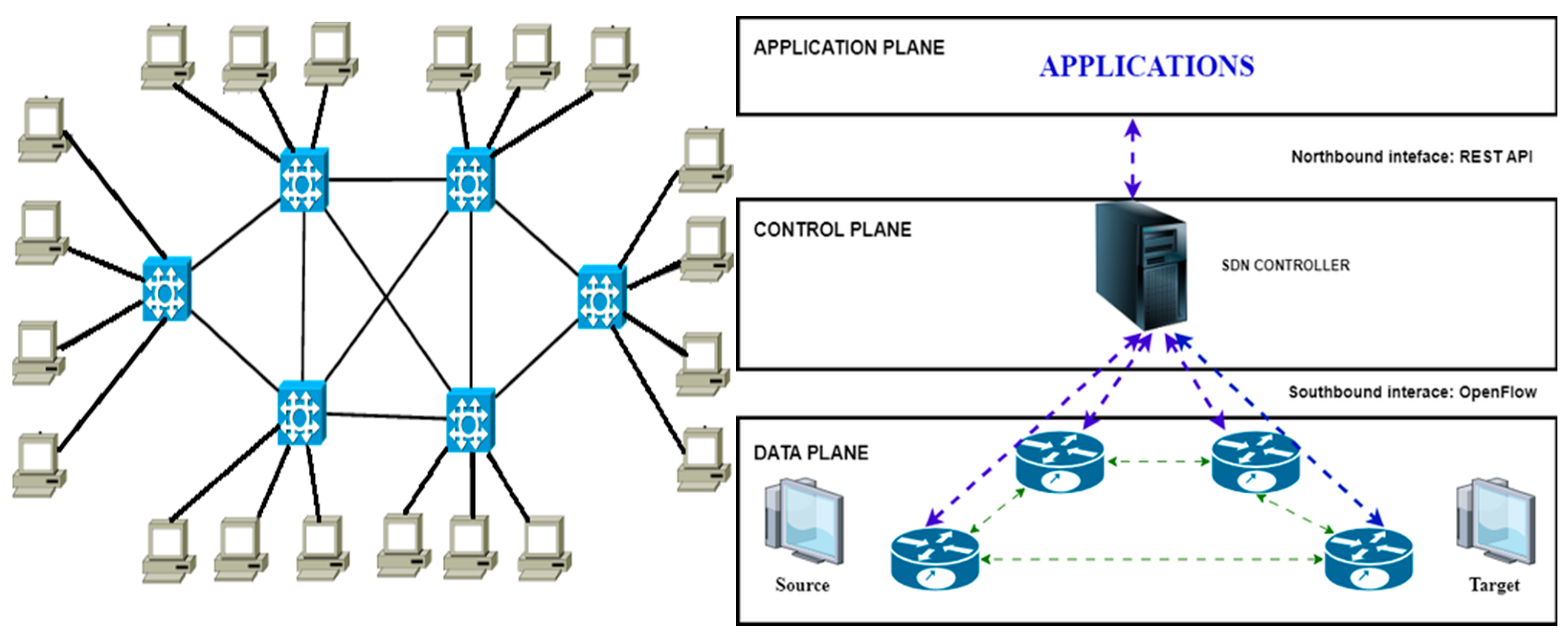

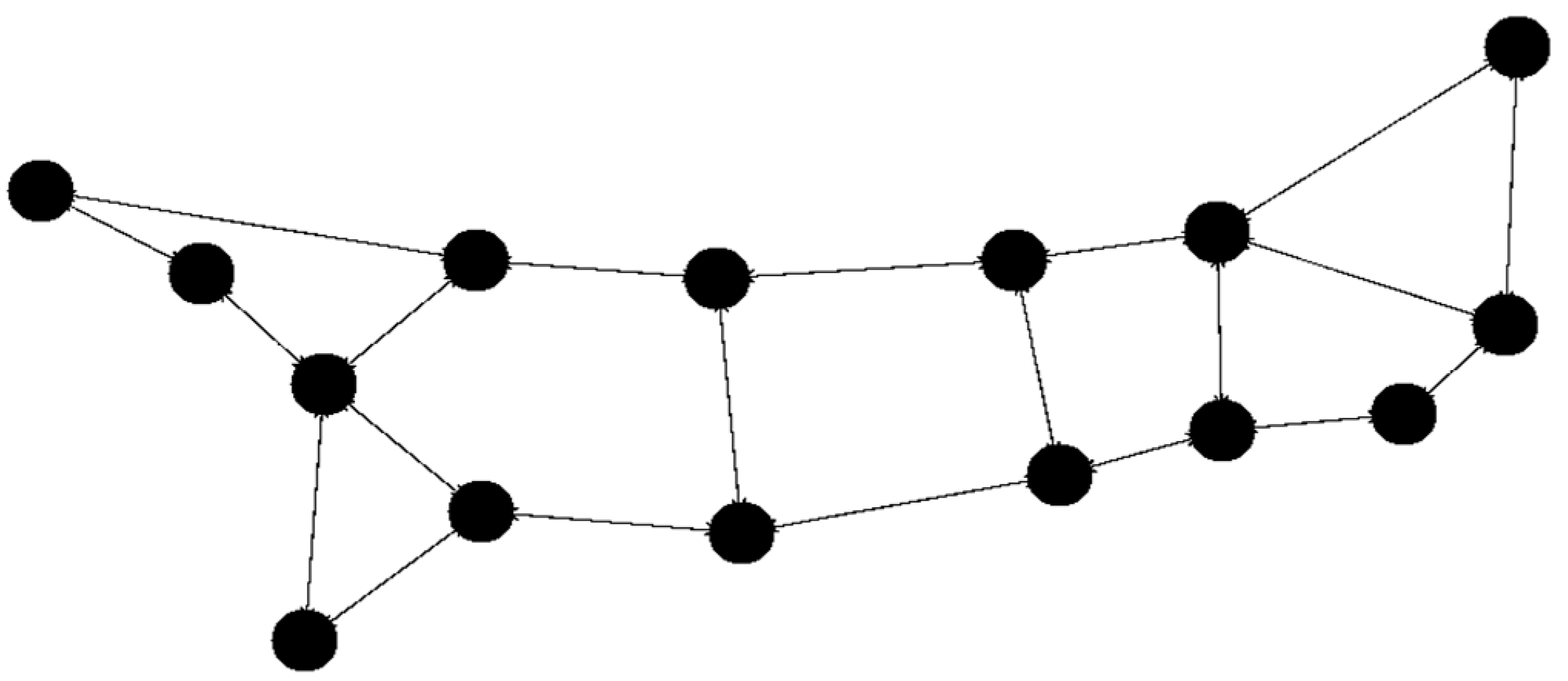

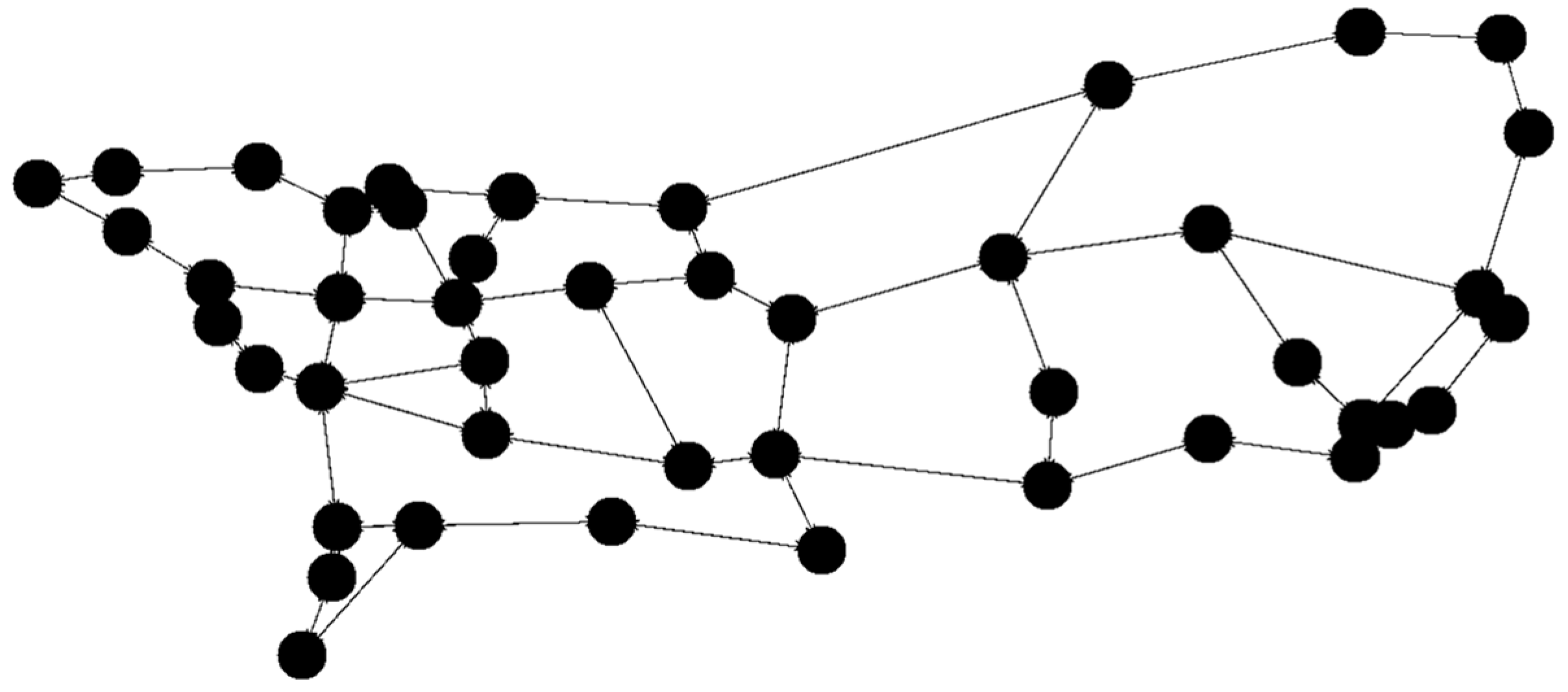
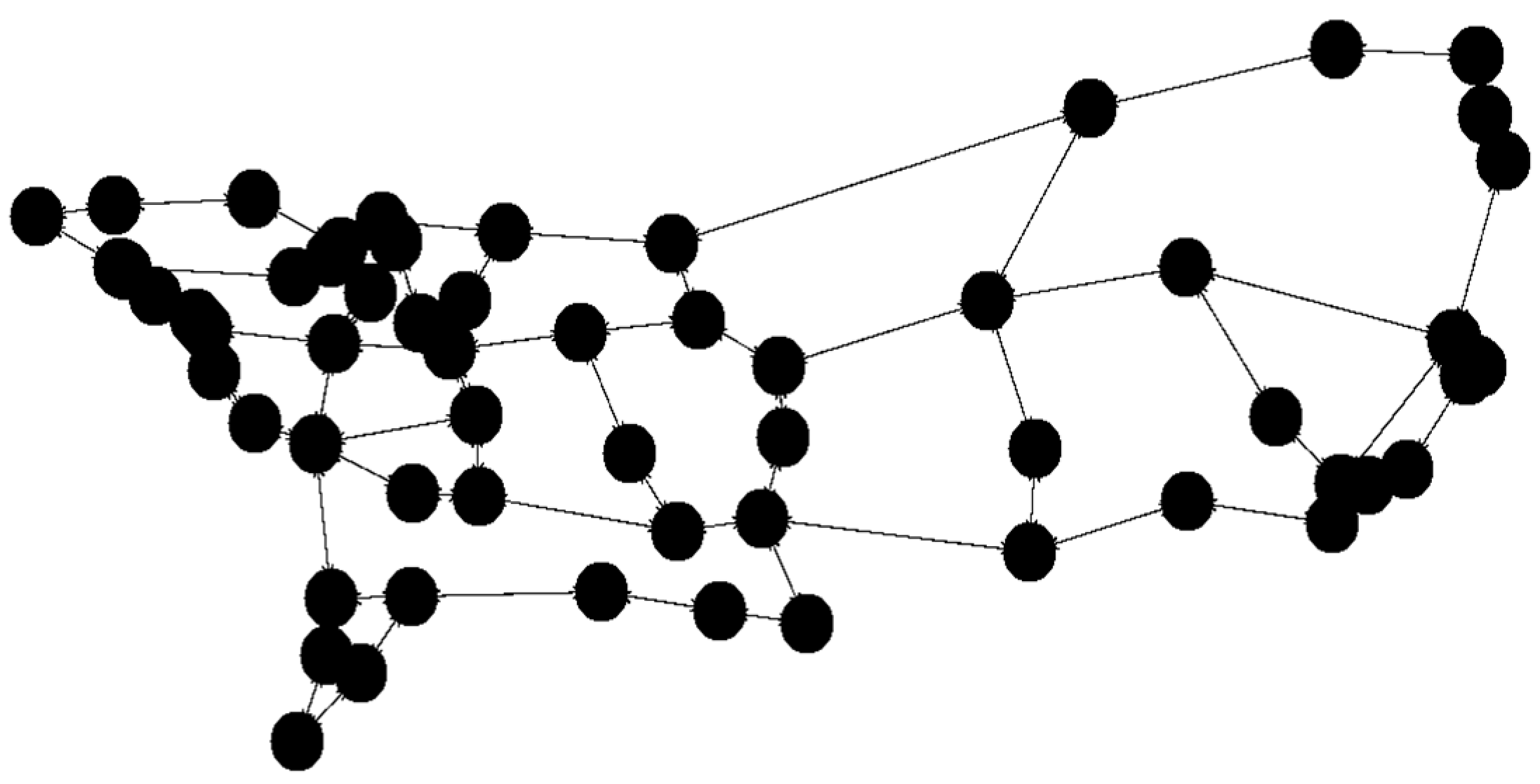




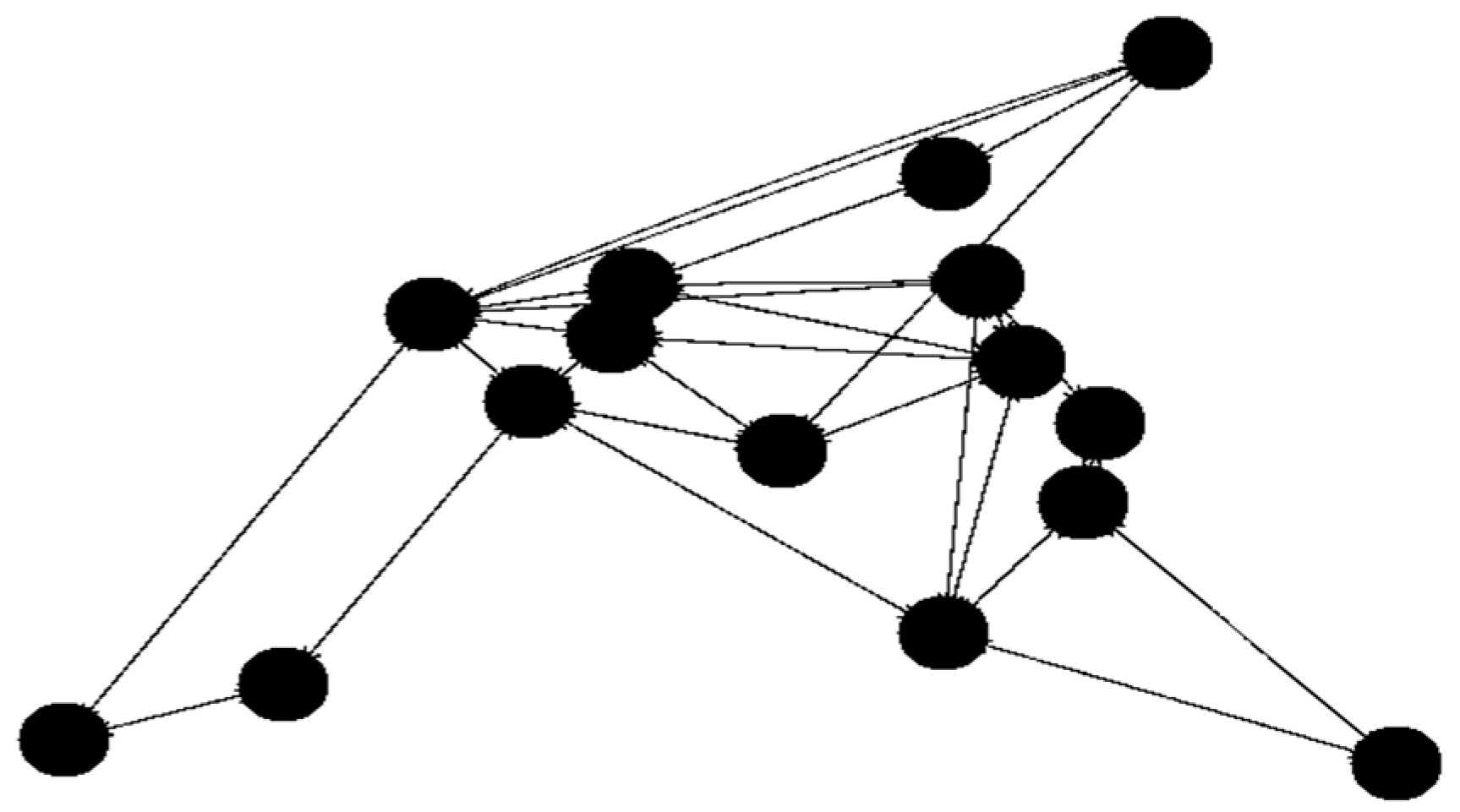




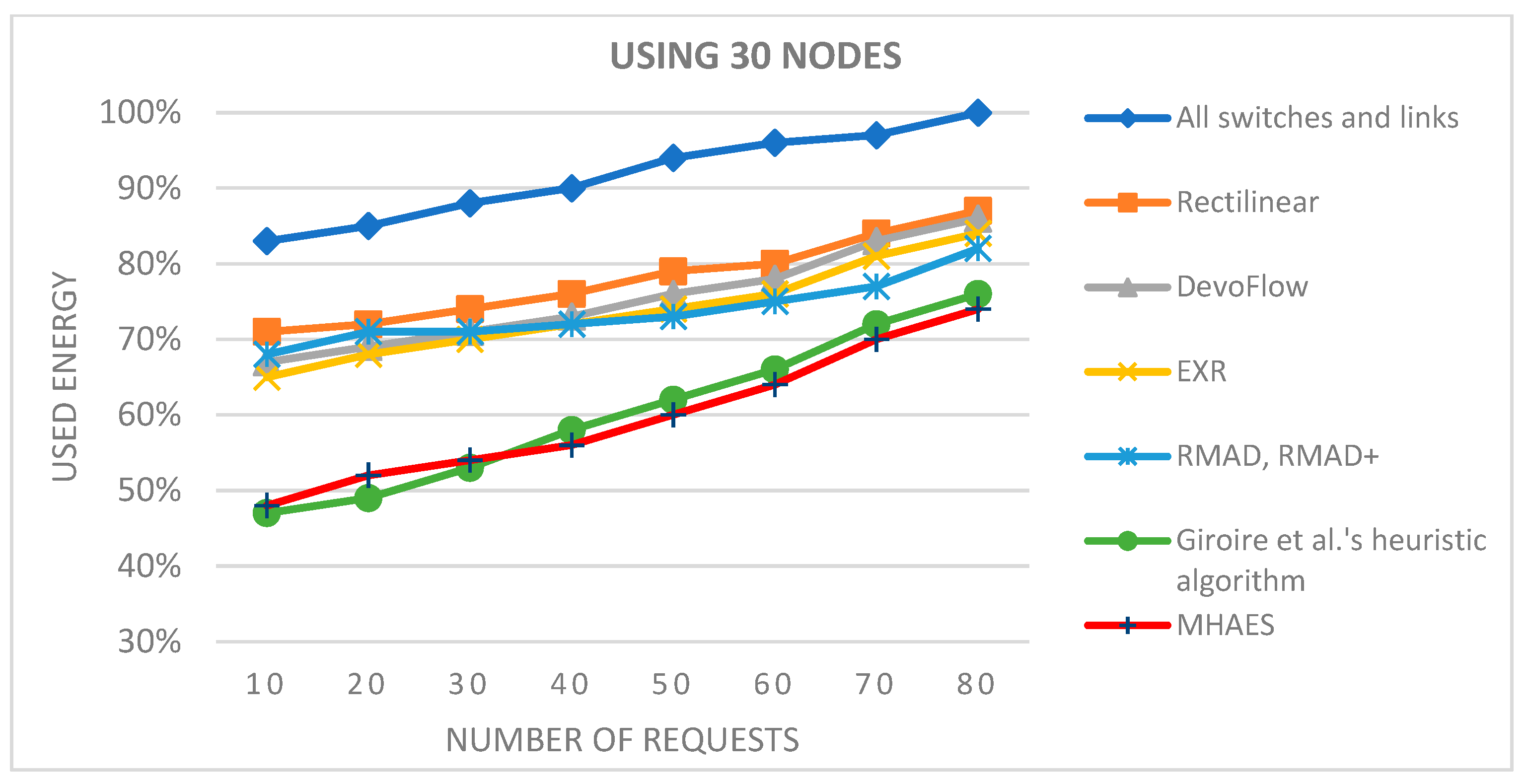


| Solution Name | Method | Difficulty of Implementation | Network Type |
|---|---|---|---|
| Rectilinear [7] | Compression TCAM solution; rule list | Easy | Fixed network |
| CAM Razor [25] | Compression TCAM solution—decision diagrams; dynamic programming; redundancy removal | Medium | Fixed network |
| Compact TCAM [24,25] | Compression TCAM solution—shorter flow entry size | Medium | Fixed network |
| ECODANE [27] | End Host-Aware solution | Medium | Data center |
| GAL [9,10] | Energy-aware states; Traffic-Aware | Hard | Fixed network |
| Exclusive Routing (EXR) [10,30] | Traffic-Aware solution | Medium | Fixed network |
| SGH [11] | Traffic-Aware solution | Easy | Fixed network |
| RMAD, RMAD+ [12] | Traffic-Aware; number of active nodes; sleep ratio | Easy | Fixed network |
| Giroire et al.’s heuristic algorithm [6,13,39] | Rule Placement; TCAM—rule-spaced base; Traffic-Aware | Easy | Fixed network |
| DevoFlow [40] | Rule Placement; rule cloning; local actions | Easy | Fixed network |
| Variable Name | Description |
|---|---|
| Z | SDN switch set |
| E | Link set |
| Eij | Link between switches zi and zj |
| BWij | Bandwidth of the link between zi and zj |
| PCSi | Power consumption of switch zi |
| PCi | Power consumption of link eij |
| f | Flow of the network |
| Sr, ds | Source switch, destination switch |
| fr | Flow rate |
| Hin | Incoming host |
| Hout | Outgoing host |
| λf | The packet rate of flow f |
| Lij | Variable is whether edge eij is active or not |
| afi | Flow f installed on switch zi |
| Si | Status of the switch |
| Variable Name | Description |
|---|---|
| Z | SDN switch set |
| E | Link set |
| H | Hosts |
| Eij | Link between switches zi and zj |
| Bwij | Bandwidth of the link between zi and zj |
| R | Set of offered unicast request |
| hr, r ∈ R | Offered route rule for r. From this information, s(r) denotes the source host of a demand r, and t(r) is the target host |
| Ebasic | Base power of SDN-enabled switches |
| Econfiguration_po | The power activation of both extreme switches ports of a link. This affects overall Econfiguration |
| Econfiguration_sp | Speed rate, this affects overall Econfiguration |
| Eopenflow_control | Limited performance associated with control and OpenFlow traffic |
| ASW | Active switches list |
| SSW | Sleeping switches list |
| CA | Maximum capacity of a link |
| TCA | Threshold number for link capacity |
| BN | A big number |
| Variable Name | Description |
|---|---|
| ze, e ∈ E | 1: if designated link is already installed 0: otherwise (no link means 0 capacity) |
| CAe, e ∈ E | The capacity of the designated link |
| Yre, r ∈ R, e ∈ E | 1: if demand r passed designated link e, 0: otherwise |
| yre, r ∈ R, e ∈ E | 1: if demand r passed designated link e, 0: otherwise |
| Yz, z ∈ Z | 1: if designated switch is already installed 0: otherwise |
| rz, z ∈ Z | The number of installed OpenFlow flows in designated switch z |
Disclaimer/Publisher’s Note: The statements, opinions and data contained in all publications are solely those of the individual author(s) and contributor(s) and not of MDPI and/or the editor(s). MDPI and/or the editor(s) disclaim responsibility for any injury to people or property resulting from any ideas, methods, instructions or products referred to in the content. |
© 2023 by the authors. Licensee MDPI, Basel, Switzerland. This article is an open access article distributed under the terms and conditions of the Creative Commons Attribution (CC BY) license (https://creativecommons.org/licenses/by/4.0/).
Share and Cite
Agg, P.A.; Johanyák, Z.C. Saving Energy Using the Modified Heuristic Algorithm for Energy Saving (MHAES) in Software-Defined Networks. Sensors 2023, 23, 9581. https://doi.org/10.3390/s23239581
Agg PA, Johanyák ZC. Saving Energy Using the Modified Heuristic Algorithm for Energy Saving (MHAES) in Software-Defined Networks. Sensors. 2023; 23(23):9581. https://doi.org/10.3390/s23239581
Chicago/Turabian StyleAgg, Péter András, and Zsolt Csaba Johanyák. 2023. "Saving Energy Using the Modified Heuristic Algorithm for Energy Saving (MHAES) in Software-Defined Networks" Sensors 23, no. 23: 9581. https://doi.org/10.3390/s23239581
APA StyleAgg, P. A., & Johanyák, Z. C. (2023). Saving Energy Using the Modified Heuristic Algorithm for Energy Saving (MHAES) in Software-Defined Networks. Sensors, 23(23), 9581. https://doi.org/10.3390/s23239581










